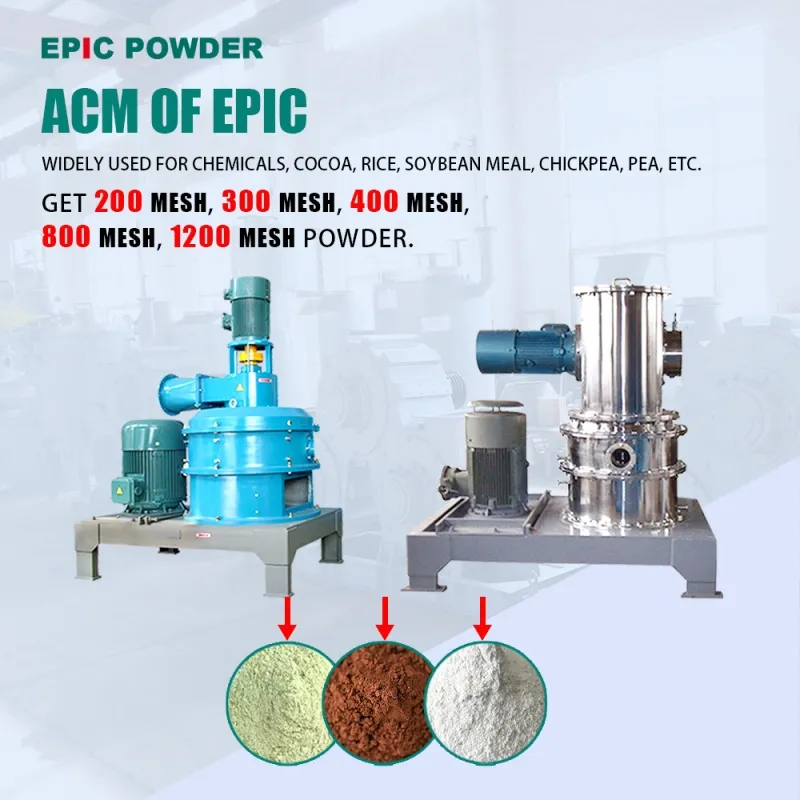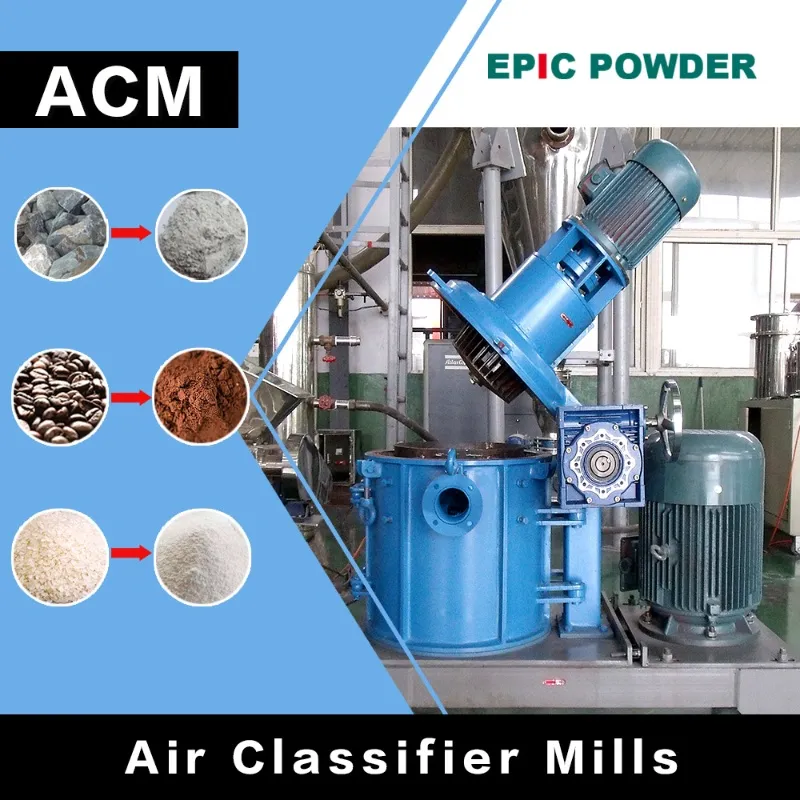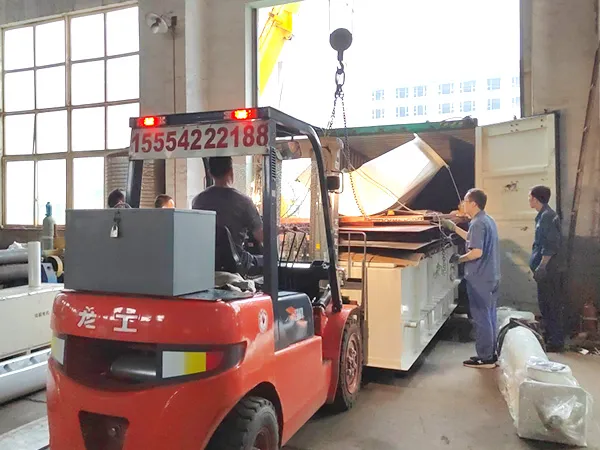In modern powder processing industries, the demand for precision, efficiency, hygiene, and automation continues to rise—particularly in high-value sectors such as food additives, fine chemicals, electronic materials, and pharmaceutical excipients. While traditional grinding systems such as hammer mills and ball mills are still used for large-scale coarse grinding, they often fail to meet the strict requirements for ultrafine particle size control, contamination prevention, and energy efficiency. This is where the โรงงานลักษณนามอากาศ(ACM) stands out. By integrating high-speed impact grinding with dynamic air classification in a single, closed system, it has become a key technology in precision powder engineering.

What Is an โรงลักษณนามอากาศ(ACM)?
An air classifier mill combines rotational impact forces and variable-speed air classification within one chamber. The system typically includes:
- A rotating impact disc that micronizes material through high-speed collisions.
- An internal classifier wheel with frequency-controlled speed for precise fine particle separation.
- A circulating air system that transports fine particles while coarse ones are recirculated for further grinding.
- A dual cooling system that maintains a stable temperature to protect heat-sensitive materials.
This configuration enables simultaneous grinding and classification, eliminating the need for external classifiers and minimizing energy losses.
Core Technical Advantages
Wide Particle Size Range: D97 = 5–300 μm
By adjusting rotor speed (3000–8000 rpm) and classifier frequency (10–50 Hz), operators can fine-tune particle sizes for different materials with precision:
| Material | Target Particle Size |
|---|---|
| Talcum Powder | D97 = 20 μm |
| Icing Sugar | D50 = 10 μm |
| Resin Additives | D97 = 30–50 μm |
| Protein Powder | D50 = 15 μm |
The classifier wheel automatically adjusts with airflow to maintain a stable cut point, ensuring particle size variation remains within ±5%.
Integrated Classification Prevents Over-Grinding
Unlike traditional setups that rely on external classifiers, the air classifier mill performs real-time in-chamber separation. Fine particles are discharged immediately, while oversized particles automatically return for regrinding—effectively preventing over-milling and improving product uniformity.

Dual Cooling System for Temperature Control
Equipped with both air cooling and water jacket cooling, the system maintains outlet temperatures between 35–45°C, making it ideal for heat-sensitive materials such as:
- Protein and enzyme powders
- Functional food ingredients
- Resin and polymer additives
- Pharmaceutical intermediates
Fully Enclosed and Dust-Free Operation
Operating under negative pressure with an integrated pulse dust collector, the air classifier mill ensures a clean, dust-free environment.
Automatic Discharge and Slag Removal System
An automatic discharge port removes unground impurities and agglomerates at preset intervals. The system can issue clogging alerts, reduce manual intervention, and maintain continuous, stable operation.
Multi-Stage Classification Capability
For production requiring multiple particle size grades, the air classifier mill can be configured with:
- Dual classifier wheels for parallel fine/coarse separation
- External precision air classifiers for ultrafine products down to D97 = 5 μm
Typical Applications
Food Industry
- Applications: Icing sugar, yeast powder, protein powder, spices, nutritional blends
- Requirements: Low heat generation, consistent fineness, and no metal contamination
- Example: A Southeast Asian protein powder factory upgraded to an air classifier mill system, boosting yield by 22% and improving product consistency by 15%.
Chemical Industry
- Applications: Flame retardants, pigments, resin particles, polymer additives
- Requirements: D97 between 20–50 μm, low agglomeration, narrow particle size distribution
- Example: A Mexican customer uses a dual-classifier setup to produce two grades simultaneously—D97 = 30 μm and D97 = 80 μm.
Non-Metallic Minerals
- Applications: Talc, kaolin, quartz, carbon black, bentonite
- Requirements: High wear resistance, long service life, and stable fine grinding performance
- Solution: Optional wear-resistant alloys are available for abrasive materials.

Air Classifier Mill(ACM) Models and Specifications
| แบบอย่าง | Power Range | Output | Particle Size Range |
|---|---|---|---|
| MJW 300 | 7.5 kW | 2–200 kg/h | D97 = 5–300 μm |
| MJW 400 | 22 kW | 10–1000 kg/h | D97 = 5–300 μm |
| MJW 500 | 30 kW | 15–1500 kg/h | D97 = 5–300 μm |
| MJW 700 | 45 kW | 20–2000 kg/h | D97 = 5–300 μm |
| MJW 800 | 55 kW | 25–2500 kg/h | D97 = 5–300 μm |
| MJW 900 | 75–90 kW | 40–4000 kg/h | D97 = 5–300 μm |
| MJW 1000 | 90–110 kW | 45–4500 kg/h | D97 = 5–300 μm |
Customizable Options:
- Dual classification systems
- Smart cooling and temperature sensors
- Fully automatic feeding and dust control
- Online particle size monitoring
บทสรุป
With over two decades of experience in ultrafine grinding and powder engineering, ผงมหากาพย์ provides advanced air classifier mill(ACM) systems. These systems deliver exceptional precision, high energy efficiency, and excellent product purity. Each solution is custom-designed to meet the specific needs of different materials. They are widely used for quartz, calcium carbonate, pharmaceuticals, food, and chemical powders.
By integrating advanced classification technology with intelligent control, Epic Powder’s air classifier mills ensure stable operation and precise particle size control. They also help reduce energy consumption and maintenance costs. As a result, Epic Powder has become a trusted global partner in powder processing solutions. The company helps customers achieve higher efficiency and stronger competitiveness in modern production lines.

“Thanks for reading. I hope my article helps. Please leave a comment down below. You may also contact Zelda online customer representative for any further inquiries.”
— Posted by Emily Chen

